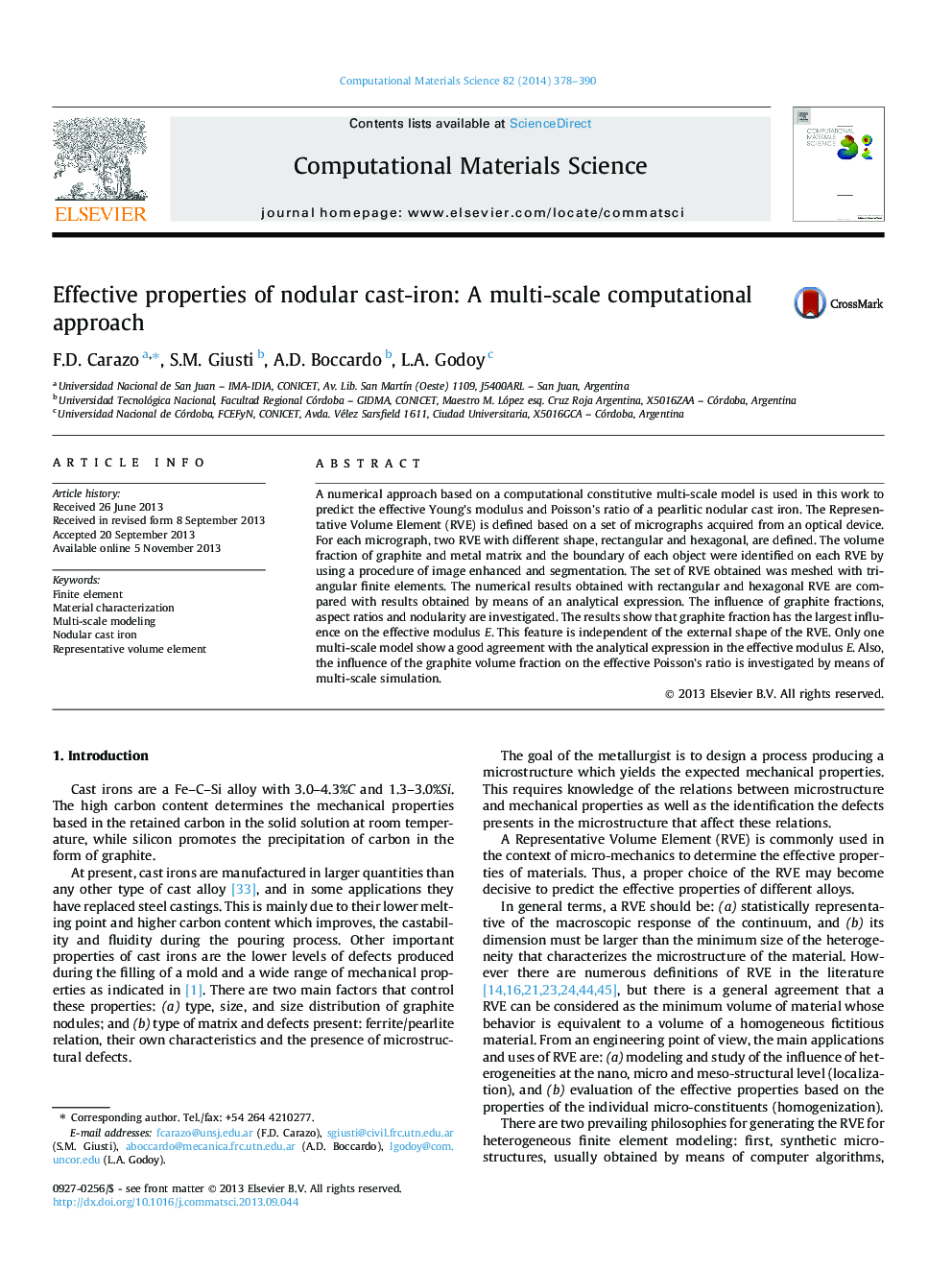| Article ID | Journal | Published Year | Pages | File Type |
|---|---|---|---|---|
| 7961152 | Computational Materials Science | 2014 | 13 Pages |
Abstract
A numerical approach based on a computational constitutive multi-scale model is used in this work to predict the effective Young's modulus and Poisson's ratio of a pearlitic nodular cast iron. The Representative Volume Element (RVE) is defined based on a set of micrographs acquired from an optical device. For each micrograph, two RVE with different shape, rectangular and hexagonal, are defined. The volume fraction of graphite and metal matrix and the boundary of each object were identified on each RVE by using a procedure of image enhanced and segmentation. The set of RVE obtained was meshed with triangular finite elements. The numerical results obtained with rectangular and hexagonal RVE are compared with results obtained by means of an analytical expression. The influence of graphite fractions, aspect ratios and nodularity are investigated. The results show that graphite fraction has the largest influence on the effective modulus E. This feature is independent of the external shape of the RVE. Only one multi-scale model show a good agreement with the analytical expression in the effective modulus E. Also, the influence of the graphite volume fraction on the effective Poisson's ratio is investigated by means of multi-scale simulation.
Keywords
Related Topics
Physical Sciences and Engineering
Engineering
Computational Mechanics
Authors
F.D. Carazo, S.M. Giusti, A.D. Boccardo, L.A. Godoy,
